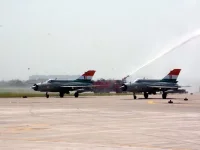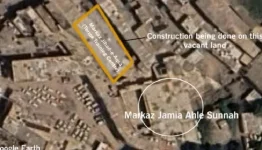- Views: 112
- Replies: 1
Following a devastating series of Indian airstrikes that inflicted heavy losses on its air assets, Pakistan is reportedly planning a major strategic shift towards constructing underground airbases.
This move aims to protect its valuable combat aircraft from future attacks and ensure the long-term survivability of the Pakistan Air Force (PAF), a response to vulnerabilities exposed during India’s ‘Operation Sindoor’.
The consideration for subterranean facilities comes after an Indian military operation on May 7, 2025, launched in retaliation for a terror attack in Pahalgam, Jammu and Kashmir, that resulted in 26 fatalities.
The Indian Air Force (IAF) targeted 13 locations, including 11 PAF airbases and terror camps. High-resolution satellite imagery confirmed significant damage to runways, command centres, and hangars, revealing critical gaps in Pakistan's existing airbase defence infrastructure.
Analysis of post-strike imagery from sources like Maxar Technologies showed that many Pakistani airbases lack a sufficient number of Hardened Aircraft Shelters (HAS).
Consequently, several high-value assets were housed in conventional hangars, which offered minimal protection against the precision-guided munitions used by the IAF, such as Brahmos, Hammer, and SCALP missiles.
Official confirmations and satellite data verified the destruction of a technologically advanced Saab 2000 Erieye Airborne Early Warning and Control System (AWACS), an aircraft that acts as a flying command post valued at approximately $175 million.
Additionally, at least three F-16 fighter jets, a hangar at Murid airbase containing Chinese-made Medium Altitude Long Endurance (MALE) reconnaissance drones, and another F-16 hangar at Jacobabad’s Shahbaz airbase were destroyed.
While airbase infrastructure like runways can often be repaired relatively quickly, the loss of sophisticated aircraft represents a severe blow to a nation's military capability and a significant financial setback.
The destruction of the Erieye AWACS, in particular, degrades the PAF’s ability to monitor airspace and manage aerial combat effectively.
In response to these exposed weaknesses, defence analysts report that discussions within the PAF are now focused on developing underground facilities.
Unlike hardened shelters, which are reinforced concrete structures designed to withstand near-misses, underground bases are typically tunnelled into mountainsides or heavily fortified below ground.
This type of construction, seen in countries like Taiwan, Switzerland, and Iran, offers maximum protection against even the most powerful conventional bunker-busting bombs.
The strategic goal appears to be a shift from short-term asset availability to ensuring long-term preservation.
By securing its most valuable aircraft—including its F-16s, JF-17 Thunders, and Mirage fleet—in underground bunkers, Pakistan would aim to protect its premium jets, even after absorbing a massive preemptive strike.
However, constructing such facilities presents formidable challenges. The engineering complexity and immense cost of building underground bases could prove difficult for Pakistan's economy.
Furthermore, this strategy does not solve all vulnerabilities. Aircraft secured underground are still dependent on external runways and taxiways to become operational. If these surfaces are destroyed, the fortified hangars could effectively become tombs, trapping the aircraft inside.
Operation Sindoor also highlighted other shortcomings in Pakistan's defence network.
The strikes successfully hit key nodes of its Air Defence Ground Environment System (ADGES), including radar and command sites, revealing gaps in Pakistan's ability to detect and intercept a large-scale, coordinated attack.
The loss of AWACS aircraft further compounded this issue, weakening the country's early-warning systems.
The operation served as a stark demonstration that in modern warfare, possessing advanced aircraft is not enough; protecting them on the ground is equally critical.







